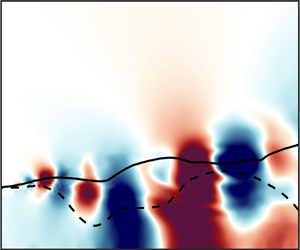Crossref Citations
This article has been cited by the following publications. This list is generated based on data provided by
Crossref.
Lopez-Doriga, Barbara
Ballouz, Eric
Bae, H. Jane
and
Dawson, Scott T.M.
2024.
Sparse space–time resolvent analysis for statistically stationary and time-varying flows.
Journal of Fluid Mechanics,
Vol. 999,
Issue. ,
Farghadan, Ali
Jung, Junoh
Bhagwat, Rutvij
and
Towne, Aaron
2024.
Efficient harmonic resolvent analysis via time stepping.
Theoretical and Computational Fluid Dynamics,
Vol. 38,
Issue. 3,
p.
331.
Zhong, Zhirong
Hua, Xuanhao
Zhai, Zhi
and
Ma, Meng
2024.
A novel tensor-based modal decomposition method for reduced order modeling and optimal sparse sensor placement.
Aerospace Science and Technology,
Vol. 155,
Issue. ,
p.
109530.
Liang, Hongyang
Liu, Weidong
Hu, Xingjun
Wang, Jingyu
and
Guo, Peng
2025.
Mode-based energy transfer modulation for DBD-PA controlled cavity buffeting noise.
Mechanical Systems and Signal Processing,
Vol. 241,
Issue. ,
p.
113567.
Xu, Jun
Wang, Fei
and
Abegaz, Ruth
2025.
State of the Art of CFD-DEM Coupled Modeling and Its Application in Turbulent Flow-Induced Soil Erosion.
Geosciences,
Vol. 15,
Issue. 1,
p.
21.
Zhao, Guoshou
Liu, Heng
Wu, Rui
Cao, Linlin
and
Wu, Dazhuan
2025.
Data-Driven Identification of Nonlinear Flow-Induced Vibration Sources for a Cavitating Propeller Under Ship Wake.
Journal of Fluids Engineering,
Vol. 147,
Issue. 10,
Ma, Guanzhong
Lin, Shiyan
Li, Ruiyu
Gao, Limin
and
Tang, Kai
2025.
Spatially compressed spectral proper orthogonal decomposition.
Physical Review E,
Vol. 112,
Issue. 4,
Borra, Akhileshwar
Flynn, Zoey
Goza, Andres
and
Saxton-Fox, Theresa
2025.
Intrinsic phase-based proper orthogonal decomposition (IPhaB POD): a method for physically interpretable modes in near-periodic systems.
Journal of Fluid Mechanics,
Vol. 1002,
Issue. ,
Linot, Alec J
Lopez-Doriga, Barbara
Zhong, Yonghong
and
Taira, Kunihiko
2025.
Extracting dominant dynamics about unsteady base flows.
Fluid Dynamics Research,
Vol. 57,
Issue. 3,
p.
031401.
Tan, Xiao-Tong
and
Xu, He-Yong
2025.
Numerical study on flow characteristics and optical distortions over a hemispherical turret with different Mach numbers in transonic flow.
Physics of Fluids,
Vol. 37,
Issue. 6,
Colonius, Tim
and
Towne, Aaron
2025.
Data Driven Analysis and Modeling of Turbulent Flows.
p.
27.
Le Gall, Guillaume
Thebault, Martin
Caliot, Cyril
and
Ramousse, Julien
2025.
Modal decomposition for the analysis of solar radiation variability in urban areas.
International Journal of Heat and Mass Transfer,
Vol. 251,
Issue. ,
p.
127316.
Yeung, Brandon
and
Schmidt, Oliver T.
2025.
Spectral dynamics of natural and forced supersonic twin-rectangular jet flow.
Journal of Fluid Mechanics,
Vol. 1018,
Issue. ,



